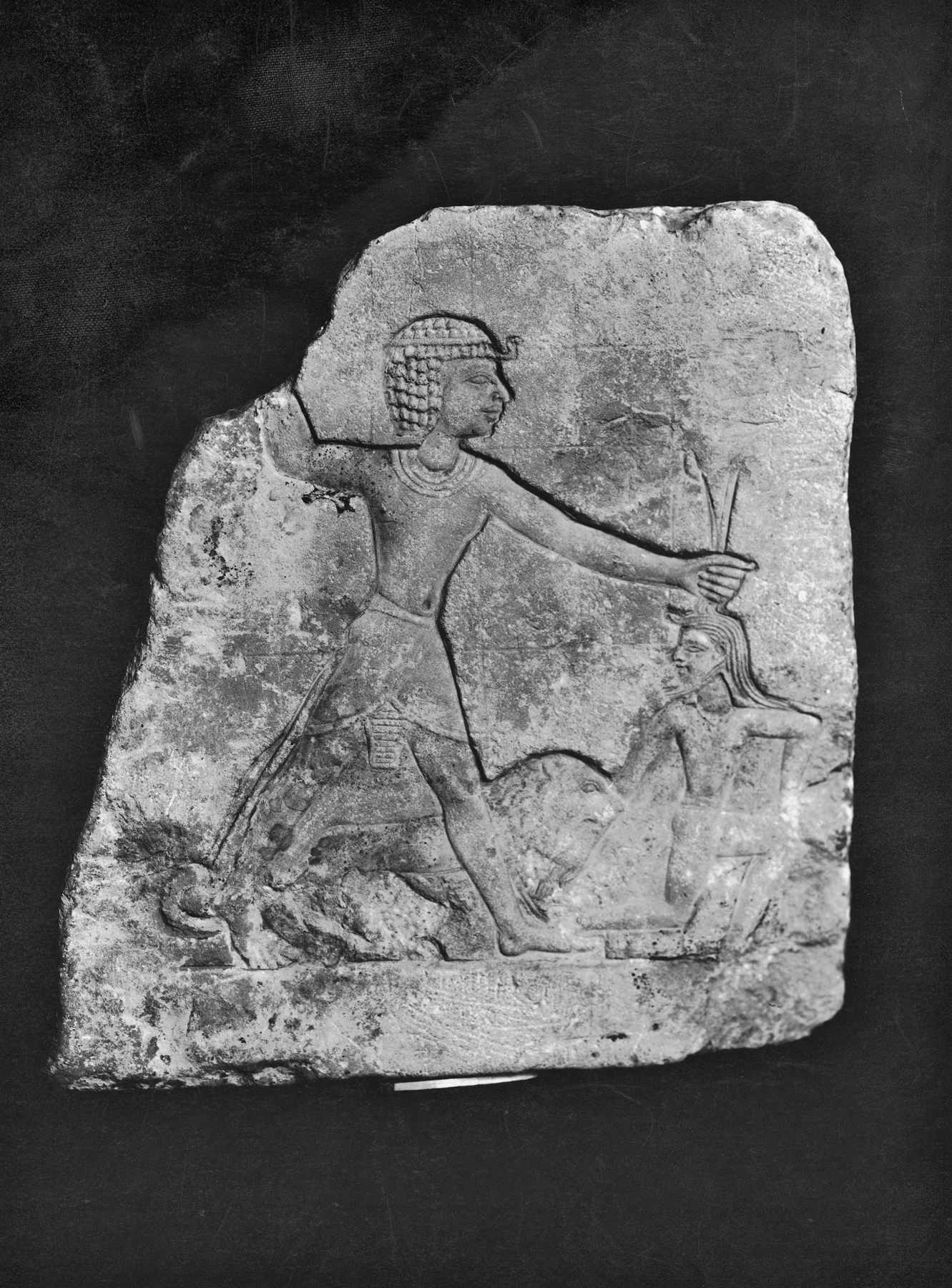Sculptor's Model of a King Slaying an Enemy
(Ancient Egypt and Nubia )
The two-dimensional model, executed in a combination of sunk and raised relief, displays a king slaying a Libyan. The king's lion is accompanying him and bites into the left arm of the half-kneeling Libyan. To reinforce their power visually, Egyptian royal monuments often displayed depictions of groups of foreigners bound as prisoners or in defensive positions while Egyptian sovereigns attacked. Representatives of various Nubian groups were frequently included, along with Babylonians, Libyans, Syrians, Hittites, Canaanites, Philistines, Amorites, and even Greeks. While some nations were conquered and captured, others were vassal states that offered tribute or were bound to Egypt by diplomatic treaties. To depict the foreign groups, Egyptian artists standardized their clothing and hairstyles into set “types” and emphasized any perceived physical differences from Egyptians.
Provenance
Provenance (from the French provenir, 'to come from/forth') is the chronology of the ownership, custody, or location of a historical object. Learn more about provenance at the Walters.
Khawam brothers, Cairo, [date and mode of acquisition unknown]; Henry Walters, Baltimore, 1930, by purchase; Walters Art Museum, 1931, by bequest.
Conservation
| Date | Description | Narrative |
|---|---|---|
| 8/23/1972 | Treatment | cleaned |
| 7/3/1974 | Treatment | stabilized |
| 9/3/1974 | Treatment | stabilized |
| 8/17/1998 | Examination | survey |
| 10/26/2000 | Treatment | cleaned |
Geographies
Egypt (Place of Origin)
Measurements
7 11/16 in. (19.6 cm)
Credit Line
Acquired by Henry Walters, 1930
Location in Museum
Accession Number
In libraries, galleries, museums, and archives, an accession number is a unique identifier assigned to each object in the collection.
In libraries, galleries, museums, and archives, an accession number is a unique identifier assigned to each object in the collection.
22.45


